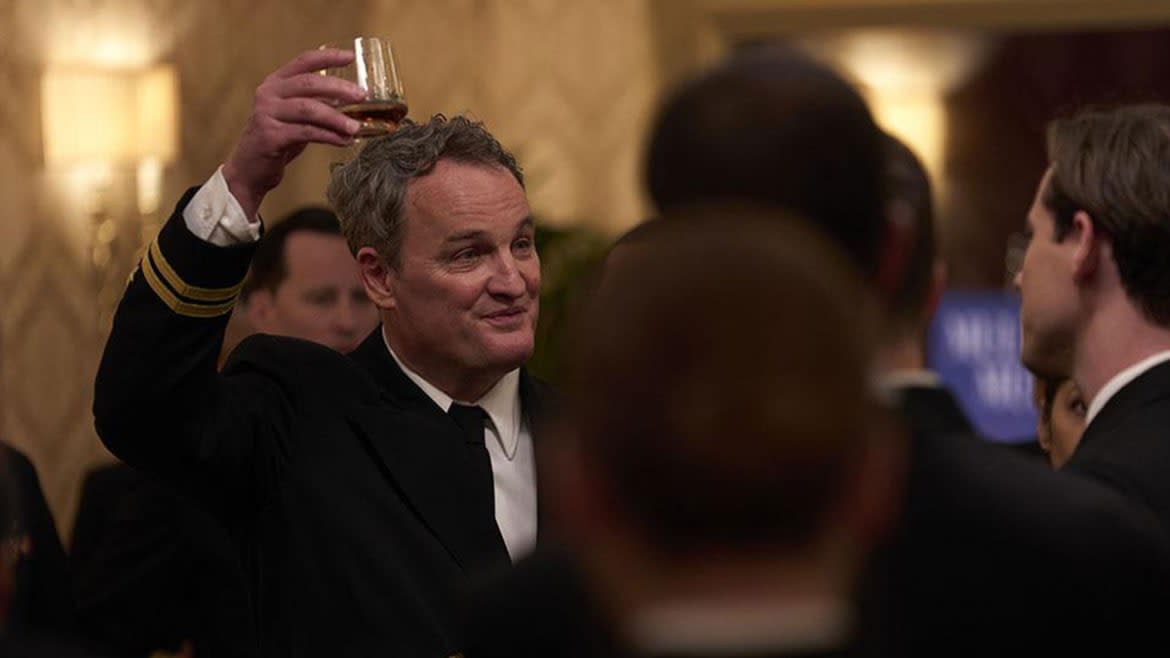Don’t Remember William Friedkin By His Horrible Last Film

The Caine Mutiny Court-Martial is two warring things at once: First and foremost, it is the last film by a justly acclaimed and beloved director, William Friedkin; it is also (and this presents a bit of a problem for the reviewer) a terrible, terrible film. Nobody wants to insult the dead.
The film takes the form, almost exclusively, of a trial, loosely centered on events that took place in the 1954 film The Caine Mutiny. In that film, starring Humphrey Bogart as Lieutenant Commander Queeg, a venerable ship captain relieved of duty aboard the Caine, a U.S. Navy minesweeper in the Second World War, after younger underlings, Keith and Keefer judge him to be paranoid and unfit for service, turning the ship’s crew against him. Friedkin’s modern-day film offers a wobbly update of those events, setting the action in the Persian Gulf in 2022.
Friedkin’s film centers only on the court-martial trial for mutiny of the first officer, Stephen Maryk, meaning that the events are relayed to us exclusively via testimony. Lieutenant Barney Greenwald (Jason Clarke, once again playing a courtroom litigant after his exertions in Oppenheimer) acts as lawyer for the defense, interrogating Maryk and gradually making a fool of the bumptious captain, Queeg (Kiefer Sutherland).
The film’s principal problem is visible almost immediately—namely, that people reciting a story about events that took place, that we haven’t ourselves seen, is the exact opposite of exciting. Watching these people talking about, for instance, an incident involving strawberries, or another episode concerning a crate full of alcohol, is not—on its own—enough to sustain an audience’s interest.
Plainly put, The Caine Mutiny Court-Martial is deeply, hilariously, pioneeringly boring. It may even be the most boring film I have ever seen, in the way it constantly substitutes dreary talking for action, while offering zip in terms of visuals. Actors sit down to speak—on a chair in the middle of tables set in a U formation, in an ugly mahogany-panelled room. The action remains here for 95 percent of the film, making for one of the most brown films ever recorded. The best that can be said for the filmmaking is that it is unobtrusive—in reality, there is no pop to the blocking, decor, dialogue, lighting or camera movements. A visual cheapness abides.
Some of the drabness could have been mitigated by great performances, but Friedkin’s actors are all at sea—no pun intended, truly, since we never see any of these sailors at work, but only hear reported speech about their activities. Most lost of all is Kiefer Sutherland as Queeg, offering up a kind of B-movie Kevin Spacey characterization, complete with an affected old-style drawl.
Sutherland has nothing to feed on as an actor, because he is merely filmed full-on and given lines to speak, almost exactly like a filmed play. Jason Clarke does his level best as the slyly belligerent Greenwald, but is similarly sunk by the film’s sheer lack of means.
Only one actor manages to say this rot with any conviction—a young scene-stealer by the name of Gabe Kessler (Stranger Things), who, as the sweetly clueless Quartermaster, Junius Urban, manages to evince some humor, some humanity from his role. Only this actor, by adding pauses and imposing some expression on his character beyond the rigid, formal courtroom lines he has been given, succeeds in creating something like interest.
A courtroom drama can be extraordinarily exciting and involving—12 Angry Men comes to mind—but a film has to work at doing this, using an array of formal dramatic tools. The Caine Mutiny Court Martial stubbornly refuses to zhuzh up the trial it depicts, resulting in two hours of people saying things like, “Petition for the court to delete the last comments from the record,” and, “You were in command on the day, correct?”
Baffled and exhausted, with nothing to look at or enjoy, this reviewer at one point resorted, in desperation, to pondering the weird coincidence that a character is named Lieutenant Thomas Keefer and Queeg is played by Kiefer Sutherland.
The Caine Mutiny Court-Martial has a coda, set in a bar—a bar that has the bizarre appearance of a conference room, with sailors crowded awkwardly around, filmed vaguely from above. This is a little bit of a relief from the eyesore of the courtroom, but what happens here is a spuriously reactionary “twist”, which I won’t spoil, save to say that it hinges on lauding the old boys who stood by to stand up for America after 9/11.
These lines clang furiously, and sound utterly divorced from the political moment, as well as casting a pall on the film’s previous events. Have we been watching an analysis of the mechanics of truth and justice, or were we actually witnessing a sort of apology for America’s nationalistic interventionism. The sour taste left by this episode adds a final insult to the injury of the film’s prevailing tedium.
Get the Daily Beast's biggest scoops and scandals delivered right to your inbox. Sign up now.
Stay informed and gain unlimited access to the Daily Beast's unmatched reporting. Subscribe now.


